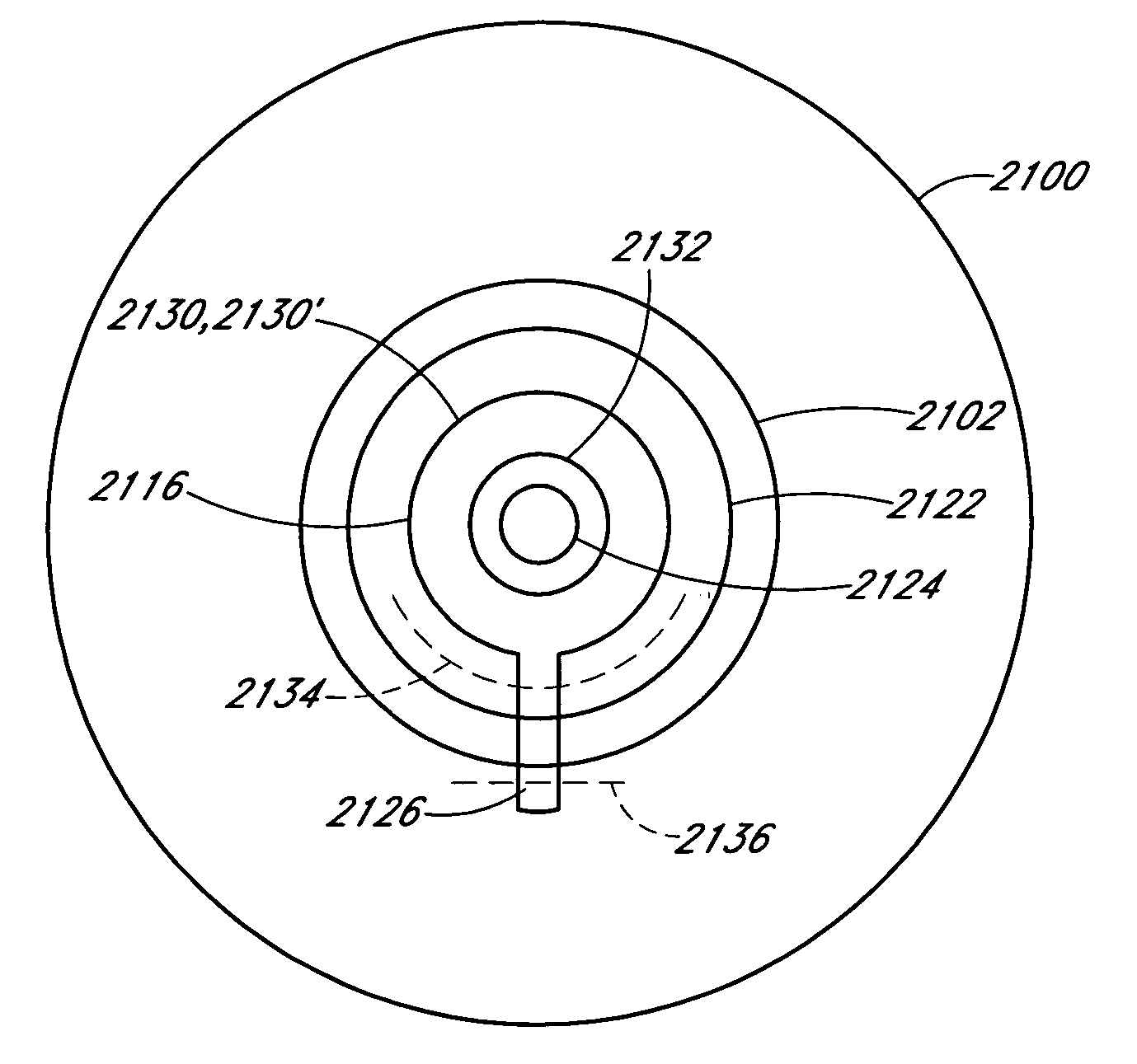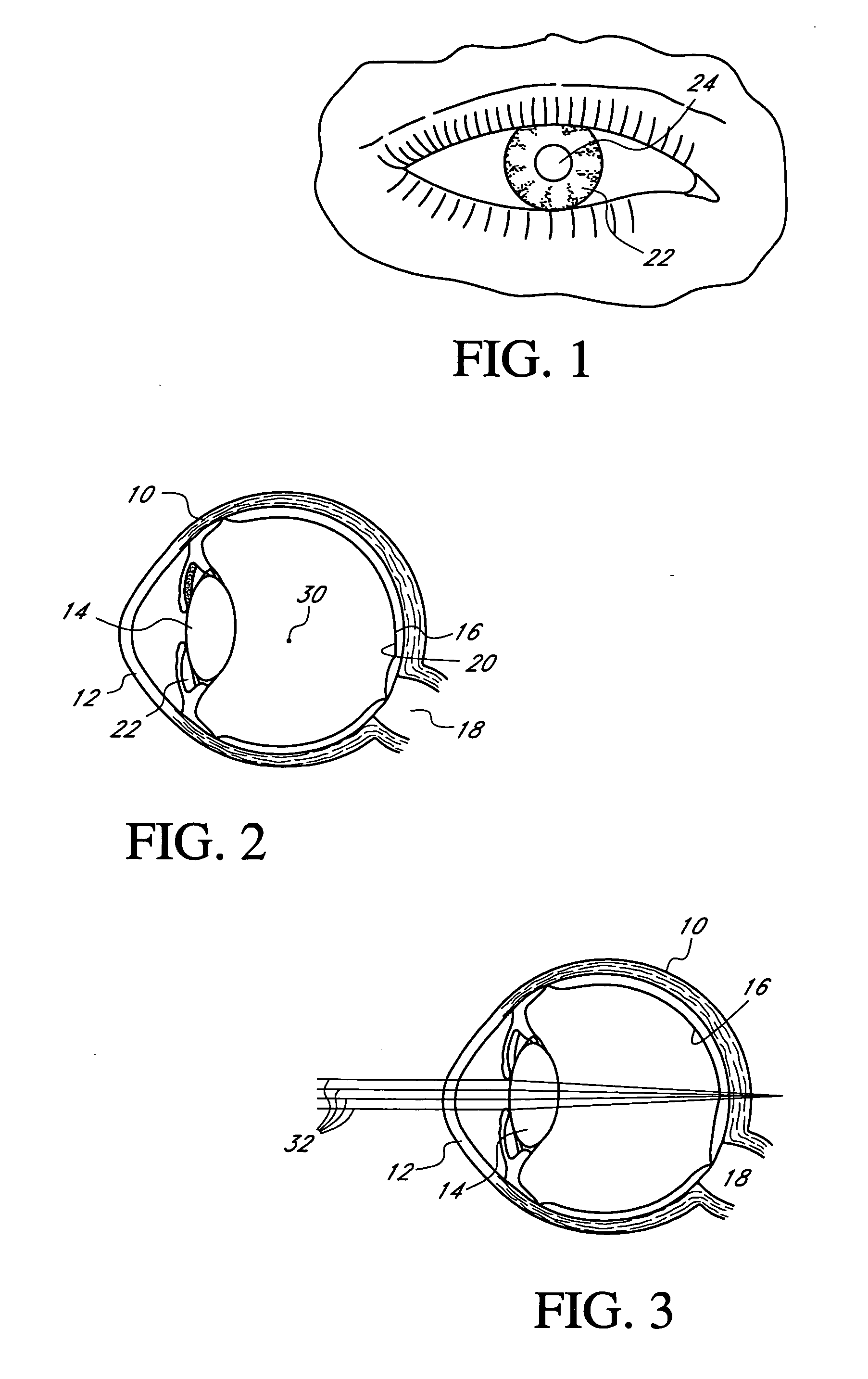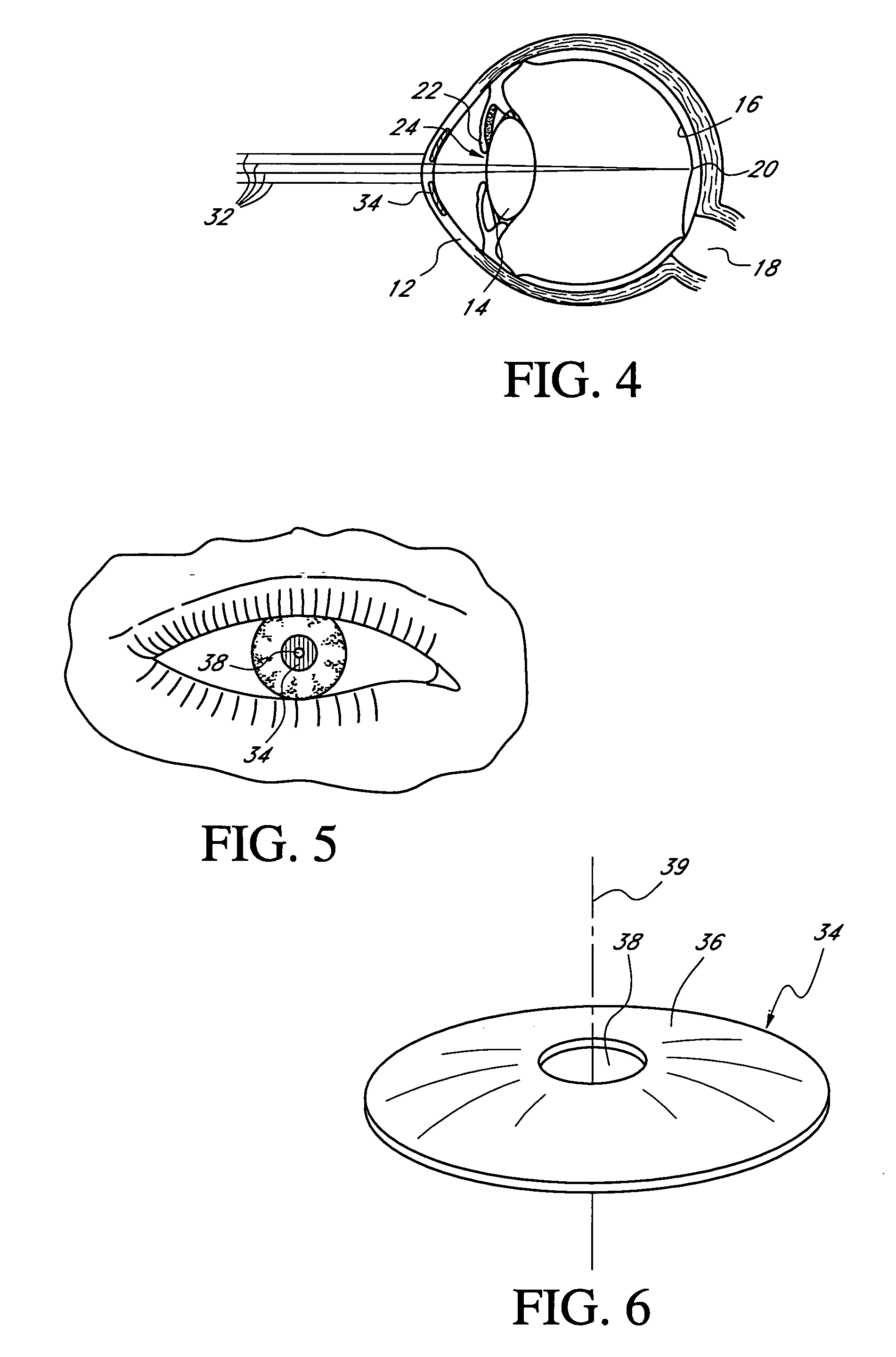Ocular inlay with locator
- Summary
- Abstract
- Description
- Claims
- Application Information
AI Technical Summary
Benefits of technology
Problems solved by technology
Method used
Image
Examples
Embodiment Construction
[0081] This application is directed to ocular devices and, more particularly, to corneal inlays and other ocular implant devices with a locator structure that indicates the location of the implanted ocular device and / or facilities removal of the ocular device from the eye. One ocular implant for which these arrangements are particularly well suited includes an inlay or mask that employs pin-hole vision correction, although some of the other devices and applications in which a locator structure could be used are discussed below. The ocular devices may be applied to the eye in any manner and in any location and can be used alone or in combination with other ocular devices, e.g., with contact lenses or intraocular lenses.
I. Overview of Pin-Hole Vision Correction
[0082] As discussed above, mask that has a pinhole aperture may be used to improve the depth of focus of a human eye. As discussed above, presbyopia is a problem of the human eye that commonly occurs in older human adults whe...
PUM
 Login to View More
Login to View More Abstract
Description
Claims
Application Information
 Login to View More
Login to View More - R&D
- Intellectual Property
- Life Sciences
- Materials
- Tech Scout
- Unparalleled Data Quality
- Higher Quality Content
- 60% Fewer Hallucinations
Browse by: Latest US Patents, China's latest patents, Technical Efficacy Thesaurus, Application Domain, Technology Topic, Popular Technical Reports.
© 2025 PatSnap. All rights reserved.Legal|Privacy policy|Modern Slavery Act Transparency Statement|Sitemap|About US| Contact US: help@patsnap.com



